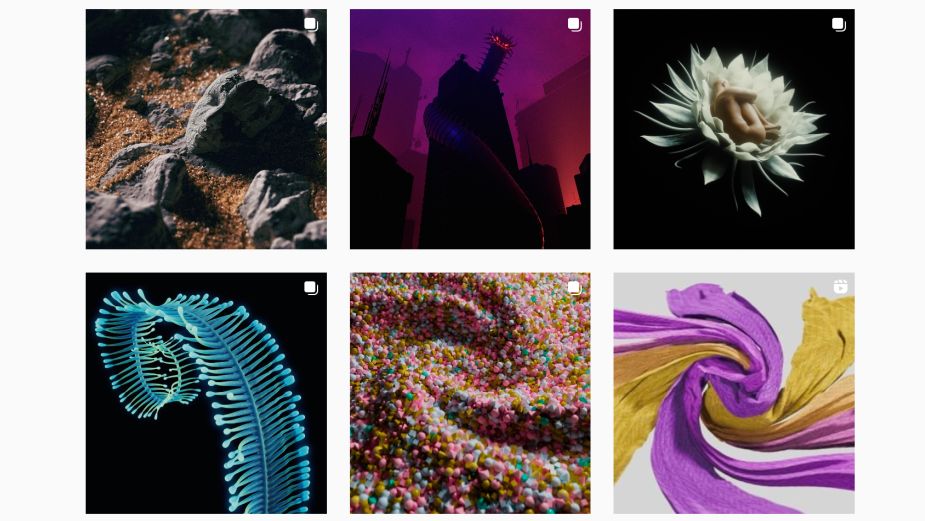
Uprising: Dean Ripper on Creating Work Imbued with Emotion

Dean Ripper, now an animator and designer at Sarofsky, never considered himself an artist. He was, however, a constant doodler at school - much to the chagrin of his teachers. This compulsion to draw began with a love of manga, and he showed signs of creative flair throughout childhood, exploring various outlets for his imagination.
“Every month I’d get the new issue of ‘Shonen Jump’ and copy panels from the comics, and even attempt to write and illustrate my own,” he says. “Aside from art, I was also heavily into music. My parents instilled in me a love of the history of popular music and eventually, I decided to pick up the guitar, a hobby that would take up most of my time in my teenage years.”
Originally from Detroit, Dean describes himself as a “product of suburbia, for better or worse.” Despite believing the suburban Michigan experience to be “not terribly unique,” he shares that the ideological conflicts between him and his family helped shape his perspective. Rallying against the opinions of various family members and the media personalities they had aligned themselves with, Dean would argue against radio hosts in the passenger’s seat of his mother’s car and, from an early age, became politically active in reaction to some of the doctrine he witnessed.
“I think some of my family’s opinions on politics helped show me what not to be, in many ways,” he says. “I was surrounded by a pretty ‘traditional’ outlook - to put it nicely. Seeing the injustice and hypocrisy in the way that ideology is carried out helped me orient myself in the opposite direction.”
As adulthood arrived, Dean went to study animation right in the heart of the Motor City at Detroit’s College for Creative Studies, one of the country’s top automotive design schools. Minoring in critical theory, he made the most of his time and enjoyed spending his Friday nights drawing, creating and exploring everything the college’s extensive library had to offer.
After broadening his horizons with the art school experience, his first job was at Nissan, preparing 3D models of cars for use in ads. But according to Dean, most of the work he ended up doing was mechanical. “Most days I would go home and try to work on my 3D/animation skills,” he adds. “After about a year and a half, I got a response from Framestore in Chicago offering me an internship. I packed up my things and moved about two weeks later! I was finally in a creative design role which had been my goal since graduating.”
It was during these early years that Dean learned an infallible truth of the industry, and one that has influenced his outlook ever since. Specifically, he discovered the fact that people working in the industry, like us all, are humanly flawed. “They make mistakes and aren’t always perfect,” he says. “Comparing yourself to others can be constructive, and it’s great to push yourself to the next level. But that can turn negative when you feel like you can’t reach the impossible standards you set for yourself. Having fun and being true to what you want to do are key!”
He also drew lessons early on from his first professional projects. One that stands out to Dean as a learning experience is when he helped make concert visuals for Pink Floyd’s Roger Waters - an exciting proposition for a “novice rock historian” like himself. Despite “basically everything going wrong”, last-minute changes and feeling he had “completely messed up” his responsibilities, he persevered and came out the other side triumphantly. However, he adds that the biggest catalysts for his career progression have been his personal projects. “Being able to show that I was passionate about what I do really opened doors for me, I think.”
Nevertheless, his professional animation and design work, of course, is also certainly a significant point of pride and success for the creative. “As far as a professional project goes, I think it’d have to be ‘The Staircase’ main title sequence that I worked on at Sarofsky this year. It’s probably one of the highest visibility projects I’ve gotten to work on. It was also a job I got to be involved with from concept to completion, filling all sorts of different roles along the way. I even got to present some behind-the-scenes stuff from the project for the Maxon 3D Motion Show - a personal ‘MoGraph’ (motion graphics) goal!”
He continues, “The Staircase main title posed a lot of interesting creative challenges. From questions about how to best convey the familial relationship central to the show, to what type of glass material would reinforce our ideas best. We went through so many conceptual phases and iterations; it was difficult to watch some ideas I’d grown to like fall by the wayside. It was a lesson in letting go of what you like most for things that will better suit the needs of a project.”
For the designer and animator, the most fulfilling aspect of his job, which runs central to The Staircase and all of his other projects, is his pure love for simply animating; the reward of seeing a previously static object move to his will. He says, “There’s nothing more satisfying than breathing life into a piece of art!” Dean also draws excitement from the open-endedness and freedom his job allows - where he can imagine and implement different possibilities and creative solutions. However, he has found that there can be downsides to this too. The freedom and opportunity to explore so many avenues of expression can be mentally and physically draining, and it’s an issue that is presently being discussed industry-wide. “The most challenging aspect of my job is just staying fresh and not burning myself out,” he says. “It’s so easy to get your self-worth caught up in what you produce and how well/fast you produce it.”
In all of these elements of his vocation, Dean consistently aims for “a new level of clarity and beauty” - either in the underlying concept or in the execution. “Creating work imbued with emotion is the ultimate goal!” But recently, he explains, the industry has fallen victim to a frustrating ‘web3’ development that he believes threatens this very philosophy: the rise of the NFT.
“They have reduced digital art from something unique to something boring - despite what advocates of ‘ownership’ say. I don’t see the value in pumping out 1,000 pieces that are all just slight variations of each other, only to sell them as investment opportunities to collectors.” He continues, arguing that digital artists, whilst deserving - like all artists - of compensation for their art, are sadly pigeonholing themselves in the web3 space for the sake of commerce. “For the most part only people who already have a large online presence really find success in this space. To me, it doesn’t seem to be helping the average person in any tangible way. If anything, it makes [hobby artists and other artists] feel like their work is not valuable. It’s the same old high school popularity contest dynamic that has driven consumer culture for a century.”

Another significant topic in the industry that Dean addresses is the conversation around representation and diversity, which he believes still has a long way to go. “There are a myriad of issues at play, but I think getting more arts education and training into schools that may be underfunded is a good place to start,” he says. “ The industry as a whole could be doing much more with their wallets to give access to education to those who need help getting it. Why not offer free Photoshop classes that last a few weeks?”
This democratisation of knowledge and creative skills is clearly something that Dean is passionate about. The animator celebrates artists who are open to “sharing what they know, much of the time for free,” as a way to grant underprivileged people easier access to a traditional art education. “You truly can learn everything you need to know just by watching videos and reading forums,” he adds. “As far as tech developments go, Instagram, Behance and the like never fail to show me the latest developments. It’s great to see the way other artists use new tech - it always seems to trickle down through community channels. Also, YouTube!”
As well as charitable artists helping to educate the next generation, Dean also looks up to the creatives and leaders he works alongside. “People like Dan Solomon and Daniel Pernikoff [are] some of my earliest mentors and all-around fantastic humans. They’re amazing artists who are passionate about their work, as well as being extremely humble. They really showed me what the path forward as an artist can be in the industry.”
When he’s not working or self-teaching with online resources, Dean inspires fresh ideas and decompresses by reading or singing along to his guitar playing. His love for music encompasses a variety of genres and artists and he appreciates everything from hardcore punk to house, highlighting the UK techno duo ‘Two Shell’ as a personal favourite. Beyond that, the only thing he finds more therapeutic is escaping the metropolis that is Chicago - where he works and lives today - to explore nature. “I try every year to get to northern Michigan for some time away from the city,” he says. “Recharging my batteries away from the hustle and bustle is key!”
In the same vein as ‘Two Shell’, Dean appreciates other artists who “eschew convention in their work and have unique visual languages.” Closer to the designer/animator’s occupational wheelhouse, the list of visual artists he is most passionate about includes creators like ‘Kushlet’, ‘Kitasavi’, and ‘Elevator Teeth’. Specifically, he praises the first two of this selection as “just very outside the box artists,” commending them, as well as any artist who is capable of “bringing something fresh to the oversaturated digital art world.”
When identifying what lies at the core of his motivation to work and create, Dean says he is fortunate to work in the ad industry - where creativity is symbiotic with purpose. This results in a complex that reinforces and encourages innovation in thought. “At this point what drives me to create art is simply self-expression and exploration,” he adds. “Making art is fun but also meaningful, and I feel lucky to be able to work where those two things intersect.”
Whether it's in his work or outside, this motivation is powered, not only by an intrinsic urge to create - like his childhood compulsion to doodle and draw on every blank space - but by an understanding of universal responsibility and altruism. “In life I’m driven by the kindness of friends and family, and a mutual interest in making each other’s lives better.













